John Hurrell – 7 February, 2017
Sam Neill was in his late twenties when he made 'Sleeping Dogs' - he was young and gorgeous - and there is a certain amount of (lusty) humour and sly homo-erotic fantasy in Noble's editing and extrapolation, particularly in his installation of a long dark corridor that leads to a ‘nightclub', indicated by a spinning mirror ball with reflections that radiate out an adjacent window - and his single channel video 'Dream Dialects.'
In one of the most complicated solo exhibitions to be presented in Auckland for many years, Australian /Canadian artist Jem Noble presents an examination and extrapolation of Roger Donaldson‘s 1977 film Sleeping Dogs, New Zealand’s first ‘modern’ full feature movie, a production that launched the screen acting careers of Sam Neill and Ian Mune, and Donaldson’s own as a director. Based on CK Stead’s novel Smith’s Dream, Donaldson’s film is used as a springboard for collecting related textual and video/DVD editions, and a multitude of other projects Noble has outsourced to various animators, composers, a gospel choir, editors, woodcarvers, visual effect creators, designers, game developers, film shooters, translators, transcribers and illustrators.
Using strategically positioned screens, vitrines, ‘corridors’, corners, doors and windows - and working closely with Andrew Kennedy, Te Tuhi’s exhibition designer - Noble’s show is part ambulatory maze, part conceptual jigsaw. It teases out various discrepancies and extended extrapolations into new fantasies that play on the Dream of Stead’s title, even though the book has that not as a dream (sleeper’s hallucination) or reverie (daydream), but more as a dream in the sense of a fanciful aspiration or ‘bucket list’ - in Smith’s case a prevailing hope to live on a small island off the Coromandel.
As you’d expect, the contribution of CK Stead to the Donaldson project is analysed, particularly the fact that Stead wrote a second ending to his novel that featured in the film and which was quite different from the version in the book when it first appeared. Noble has carefully gone through the two published endings, comparing the narrative elements occurring in the final pages, then scrutinised the film, and then made his own video version which is closer to the original - but not a copy.
In many ways, to follow what Noble has been up to, you have to be familiar with Donaldson’s forty year old classic (watch it at least twice - it is easy to get from any public library ) and the two editions of Stead’s novel, and then correlate the details with the objects, torn out pages and moving images Noble is presenting in vitrines or on screens. There is a semblance of order with the takeaway guide sheet that lists Noble’s works with a diagrammatic floor plan, and there is a small red booklet presenting translations of the covers of overseas editions of the film, but things are scattered about - so you have to look closely. And some of Noble’s inclusions are unusual.
Sam Neill was in his late twenties when he made Sleeping Dogs - he was young and gorgeous - and there is a certain amount of (lusty) humour and sly homo-erotic fantasy in Noble‘s editing and extrapolation, particularly in his installation of a long dark corridor that leads to a ‘nightclub’, indicated by a spinning mirror ball with reflections that radiate out an adjacent window - and his single channel HD video Dream Dialects.
There is also a carved wooden asterisk (problemsofproductionandinuse (Warmth Took Me For A Ride)) lying on the floor, near the entrance to the corridor. Anyone who has read Kurt Vonnegut’s Breakfast of Champions knows that a standard joke there is that an asterisk can stand for an anus. Stead’s novel has 142 pages, and on page 138 three asterisks in a row indicate the final stages of ‘the Dream‘ and the story’s ending.
In his Dream Dialects video Noble recreates parts of the original ending of Stead’s novel by clever editing and blending sections of the movie with parts he has had filmed himself that Donaldson did not bother with. These include shots of a blonde girl in a swimming suit on a beach under a blue umbrella, and a clearing Smith (when fleeing military helicopters) stubbles across - with picnic tables, concrete block toilets and changing sheds, a site with a possibly secret life as a location for gay cruising or cottaging.
Noble’s ending oscillates between the 1971 (novel) and 1977 (film) endings, amusingly mixing in elements from both with his own new inferences and fantasies from minor details in the narrative. His synthesis is not as brutally depressing as the ending of the film, nor as positive as the ending of the first edition of the book. In Dream Dialects however, though Smith is cut down in the finish, it veers toward a homoerotic fantasy about him, much like Smith’s own fanciful heterosexual yearning for the girl on the beach. Noble is subtly countering the red-blooded heteronormativity of Stead’s writing and Donaldson’s movie: part of a very rich and complex installation spinning off a film - that with its themes of violent community divisions and armed insurrection - in the States at least, seems amazingly relevant today.
John Hurrell
Recent Comments
John Hurrell
It has been a terrible last two weeks for the visual arts and the film industry. Geoff Murphy has just ...
John Hurrell
Here is an excellent discussion between Mark Amery, Judy Darragh and Scott Hamilton about this exhibition. http://www.circuit.org.nz/blog/circuit-cast-episode-59-jem-nobles-dream-dialects
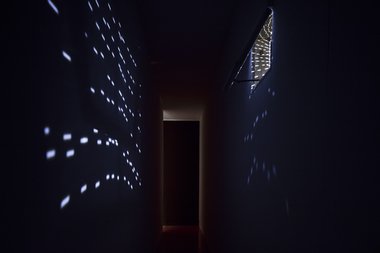
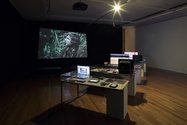
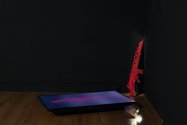
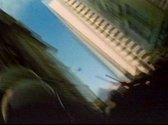
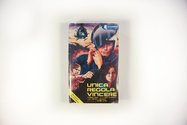
 Two Rooms presents a program of residencies and projects
Two Rooms presents a program of residencies and projects Advertising in this column
Advertising in this column



This Discussion has 2 comments.
Comment
John Hurrell, 7:44 a.m. 14 April, 2017 #
Here is an excellent discussion between Mark Amery, Judy Darragh and Scott Hamilton about this exhibition. http://www.circuit.org.nz/blog/circuit-cast-episode-59-jem-nobles-dream-dialects
John Hurrell, 10:56 a.m. 4 December, 2018 #
It has been a terrible last two weeks for the visual arts and the film industry. Geoff Murphy has just died. 'Sleeping Dogs' is one of his very early films.
Participate
Register to Participate.
Sign in
Sign in to an existing account.